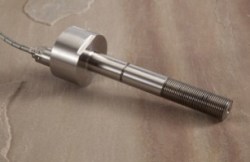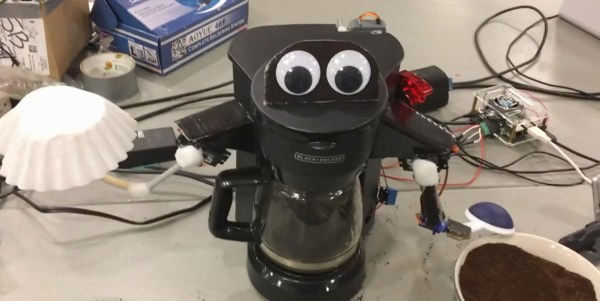Normally, when something explodes it tends to be a bad day for all involved. But not every explosion is intended to maim or kill. Plenty of explosions are designed to save lives every day, from the highway to the cockpit to the power grid. Let’s look at some of these pyrotechnic wonders and how they keep us safe.
Explosive Bolts
The first I can recall hearing the term explosive bolts was in relation to the saturation TV coverage of the Apollo launches in the late 60s and early 70s. Explosive bolts seemed to be everywhere, releasing umbilicals and restraining the Saturn V launch stack on the pad. Young me pictured literal bolts machined from solid blocks of explosive and secretly hoped there was a section for them in the hardware store so I could have a little fun.
Pyrotechnic fasteners are mechanical fasteners (bolts, studs, nuts, etc.) that are designed to fail in a predictable fashion due to the detonation of an associated pyrotechnic device. Not only must they fail predictably, but they also have to be strong enough to resist the forces they will experience before failure is initiated. Failure is also typically rapid and clean, meaning that no debris is left to interfere with the parts that were previously held together by the fastener. And finally, the explosive failure can’t cause any collateral damage to the fastened parts or nearby structures.

Pyrotechnic fasteners fall into two broad categories. Explosive bolts look much like regular bolts, and are machined out of the same materials you’d expect to find any bolt made of. The explosive charge is usually internal to the shank of the bolt with an initiating device of some sort in the head. To ensure clean, predictable separation, there’s a groove machined into the bolt to create a shear plane.

Frangible nuts are another type of pyrotechnic fastener. These tend to be used for larger load applications, like holding down rockets. Frangible nuts usually have two smaller threaded holes adjacent to the main fastener thread; pyrotechnic booster charges split the nut across the plane formed by the threaded holes to release the fastener cleanly.
“Eject! Eject! Eject!”
Holding back missiles is one thing, but where pyrotechnic fasteners save the most lives might be in the cockpits of fighter jets around the world. When things go wrong in a fighter, pilots need to get out in a hurry. Strapping into a fighter cockpit is literally sitting on top of a rocket and being surrounded by explosives. Most current seats are zero-zero designs — usable at zero airspeed and zero altitude — that propel the seat and pilot out of the aircraft on a small rocket high enough that the parachute can deploy before the pilot hits the surface. Dozens of explosive charges take care of ripping the aircraft canopy apart, deploying the chute, and cutting the seat free from the parachuting pilot, typically unconscious and a couple of inches shorter from spinal disc compression after his one second rocket ride.
https://www.youtube.com/watch?v=Z1cnvJO1TF8
Behind the Wheel
There’s little doubt that airbags have saved countless lives since they’ve become standard equipment in cars and trucks. When you get into a modern vehicle, you are literally surrounded by airbags — steering wheel, dashboard, knee bolsters, side curtains, seatbelt bags, and even the rear seat passenger bags. And each one of these devices is a small bomb waiting to explode to save your life.
When we think of explosives we tend to think of substances that can undergo rapid oxidation with subsequent expansion of hot gasses. By this definition, airbag inflators aren’t really explosives, since they are powered by the rapid chemical decomposition of nitrogenous compounds, commonly sodium azide in the presence of potassium nitrate and silicon dioxide. But the difference is purely academic; anyone who has ever had an airbag deploy in front of them or watched any of the “hold my beer and watch this” airbag prank video compilations will attest to the explosive power held in that disc of chemicals.
When a collision is detected by sensors connected to the airbag control unit (ACU), current is applied to an electric match, similar to the engine igniters used in model rocketry, buried within the inflator module. The match reaches 300°C within a few milliseconds, causing the sodium azide to rapidly decompose into nitrogen gas and sodium. Subsequent reactions mop up the reactive byproducts to produce inert silicate glasses and add a little more nitrogen to the mix. The entire reaction is complete in about 40 milliseconds, and the airbags inflate fully within 80 milliseconds, only to deflate again almost instantly through vent holes in the back of the bag. By the time you perceive that you were in an accident, the bag hangs limply from the steering wheel and with any luck, you get to walk away from the accident.
Grid Down
We’ve covered a little about utility poles and all the fascinating bits of gear that hang off them. One of the pieces of safety gear that lives in the “supply space” at the top of the poles is the fuse cutout, or explosive disconnector. This too is a place where a small explosion can save lives — not only by protecting line workers but also by preventing a short circuit from causing a fire.
Cutouts are more than just fuses, though. Given the nature of the AC transmission and distribution grid, the lines that cutouts protect are at pretty high voltages of 11 kV or more. That much voltage means the potential for sustained arcing if contacts aren’t rapidly separated; the resulting plasma can do just as much if not more damage than the short circuit. So a small explosive cartridge is used to rapidly kick the fuse body of a cutout out of the frame and break the circuit as quickly as possible. Arc suppression features are also built into the cutout to interrupt the arc before it gets a chance to form.
[Big Clive] recently did a teardown of another piece of line safety gear, an 11 kV lightning arrestor with an explosive disconnector. With a Dremel tool and a good dose of liquid courage, he liberated a carbon slug from within the disconnector, which when heated by a line fault ignites a .22 caliber charge similar to those used with powder actuated fastener tools. The rapid expansion of gasses ruptures the cases of the disconnector and rapidly breaks the circuit.
Conclusion
We’ve covered a few of the many ways that the power of expanding gas can be used in life safety applications. There are other ways, too — snuffing out oil field fires comes to mind, as does controlled demolition of buildings. But the number of explosives protecting us from more common accidents is quite amazing, all the more so when you realize how well engineered they are. After all, these everyday bombs aren’t generally blowing up without good reason.
















